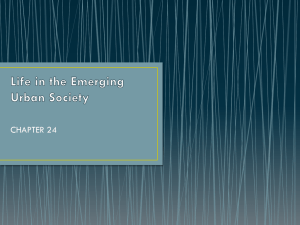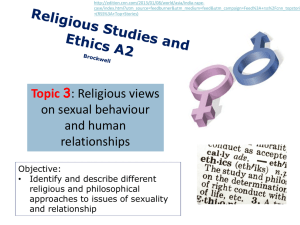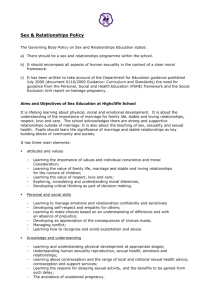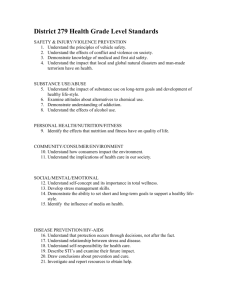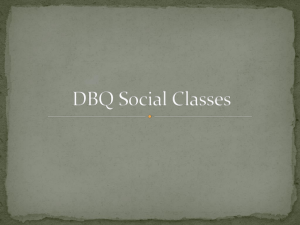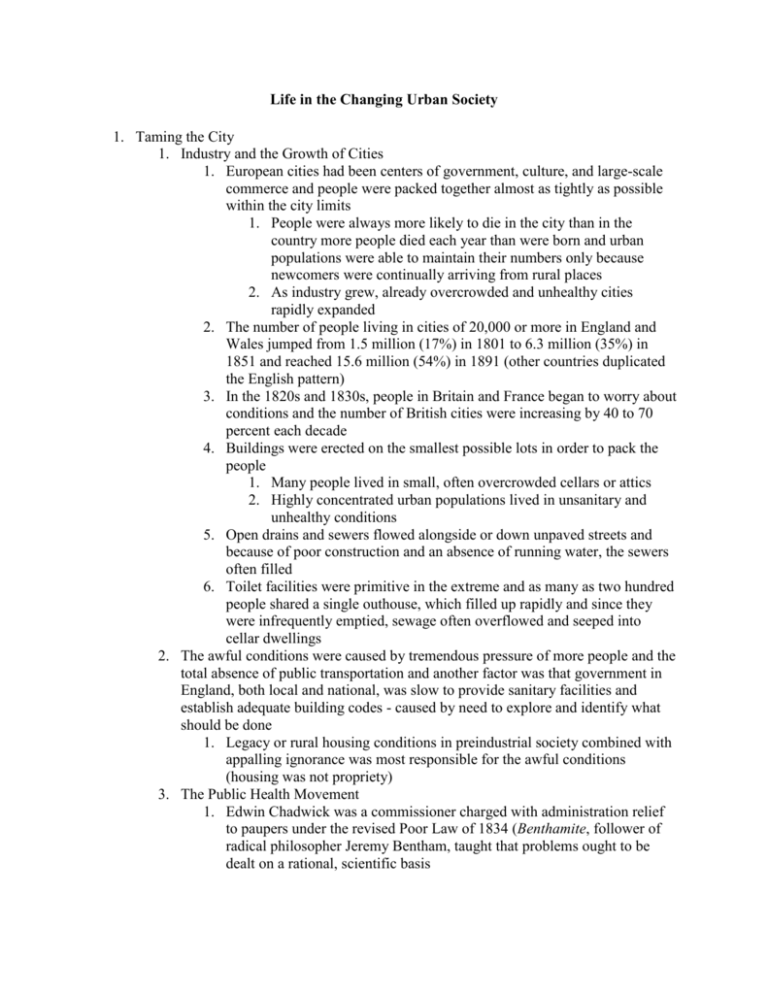
Life in the Changing Urban Society
1. Taming the City
1. Industry and the Growth of Cities
1. European cities had been centers of government, culture, and large-scale
commerce and people were packed together almost as tightly as possible
within the city limits
1. People were always more likely to die in the city than in the
country more people died each year than were born and urban
populations were able to maintain their numbers only because
newcomers were continually arriving from rural places
2. As industry grew, already overcrowded and unhealthy cities
rapidly expanded
2. The number of people living in cities of 20,000 or more in England and
Wales jumped from 1.5 million (17%) in 1801 to 6.3 million (35%) in
1851 and reached 15.6 million (54%) in 1891 (other countries duplicated
the English pattern)
3. In the 1820s and 1830s, people in Britain and France began to worry about
conditions and the number of British cities were increasing by 40 to 70
percent each decade
4. Buildings were erected on the smallest possible lots in order to pack the
people
1. Many people lived in small, often overcrowded cellars or attics
2. Highly concentrated urban populations lived in unsanitary and
unhealthy conditions
5. Open drains and sewers flowed alongside or down unpaved streets and
because of poor construction and an absence of running water, the sewers
often filled
6. Toilet facilities were primitive in the extreme and as many as two hundred
people shared a single outhouse, which filled up rapidly and since they
were infrequently emptied, sewage often overflowed and seeped into
cellar dwellings
2. The awful conditions were caused by tremendous pressure of more people and the
total absence of public transportation and another factor was that government in
England, both local and national, was slow to provide sanitary facilities and
establish adequate building codes - caused by need to explore and identify what
should be done
1. Legacy or rural housing conditions in preindustrial society combined with
appalling ignorance was most responsible for the awful conditions
(housing was not propriety)
3. The Public Health Movement
1. Edwin Chadwick was a commissioner charged with administration relief
to paupers under the revised Poor Law of 1834 (Benthamite, follower of
radical philosopher Jeremy Bentham, taught that problems ought to be
dealt on a rational, scientific basis
1. He saw that problems of poverty and welfare budget was caused
by disease and death because a sick worker was an unemployed
worker (clean up environment)
2. Chadwick collected reports from local Poor Law officials on the
sanitary conditions of the laboring population and reports
published in 1842
3. The key to the energetic action Chadwick proposed was an
adequate supply of clean piped water was essential for hygiene,
bathhouses, cleaning, and industry
4. Chadwick correctly believed that the excrement of communal
outhouse could be dependably carried off by water through sewers
as less than one-twentieth the cost of removing it by hand (iron
pipes and tile drains would provide running water)
2. In 1848, with the cause strengthened by the cholera epidemic of 1846,
Chadwick’s report became the basis of Great Britain’s first public health
law, which created a national health board and gave cities authority to
build modern sanitary systems
3. The public health movement won support in the United States, France and
Germany
4. In Great Britain, governments accepted at least limited responsibility for
the health of all citizens and they adopted programs of action that broke
the high morality rates
4. The Bacterial Revolution
1. In the nineteenth century, reformers were handicapped by the prevailing
miasmatic theory of disease—the theory that smells cause disease
(empirical observations)
2. Observation by doctors and public health officials in the 1840s and 1850s
suggested that contagion was spread through filth and not caused by filth
3. The breakthrough was development of the germ theory of disease by
Louis Pasteur
1. People used fermentation to make break and wine that would spoil
mysteriously
2. Pasteur, a French chemist began studying fermentation in 1854 and
found that fermentation depended on the growth of living
organisms and that the activity of these organisms could be
suppressed by heating the beverage (“pasteurizing” it)
3. The implication was that specific diseases were caused by specific
living organisms—germs—and that host organisms could be
controlled in people
4. In the middle of the 1870s, German country doctor Robert Koch
developed pure cul-tures of harmful bacteria, described their life cycles
and over twenty years, researchers—mainly Germans—identified the
organisms responsible for disease after disease, led to a number of
effective vaccines and emergence of modern immunology
5. English surgeon Joseph Lister noticed that patients with simple factures
were much less likely to die than those with compound fractures, in which
the skin was broken and internal tissues were exposed to the air and after
Pasteur in 1865 showed the air was full of bacteria, applied a chemical
disinfectant to a wound dressing (sterilizing)
6. In the 1880s, German surgeons sterilized everything that entered the
operating room
7. Mortality rates began to decline dramatically in the European countries by
1910, the death rates for people in urban areas were generally no greater
than in the rural areas
5. Urban Planning and Public Transportation
1. Important transformations significantly improved the quality of urban life
1. Urban planning after 1850 was revived and extended and France
took the lead during the rule of Napoleon III, who sought to stand
above class conflict and promote welfare of all his subjects through
government action (Second Empire)
2. Napoleon III believed that rebuilding much of Paris would provide
employment, improve living conditions, and testify the power and
glory of his empire
3. Napoleon placed baron Georges Haussmann, an aggressive,
impatient Alsatian in charge of Paris who was an authoritarian
planner capable of facing opposition
2. Haussmann and his fellow planners razed old buildings in order to cut
broad, straight, boulevards through the center of the city, which allowed
for traffic to flow freely
1. New streets stimulated the construction of better housing and small
neighborhood parks and open spaces were created throughout the
city; the city also improved its sewers and a system of aqueducts
doubled the city’s supply of good fresh water
2. In city after city, public authorities mounted an attack on many of
the related problems of the urban environment (better water supply
and waste disposal)
3. Zoning expropriation laws allowed a majority of owners of land in given
quarter of the city to impose major street or sanitation improvements on a
reluctant minority
4. The development of mass public transportation improved urban living
conditions
1. In the 1870s, many European cities authorized private companies
to operate horse-drawn streetcars to carry the riders, developed in
the United States
2. Then in the 1890s, European countries adopted another American
transit innovation, the electric streetcar, which were cheaper,
faster, and dependable
3. Each person used public transportation four times as often in 1910
as in 1886
5. The new boulevards and transportation gave people access to new,
improved housing and still-crowded cities were able to expand and
become less congested
6. On the Continent, many city governments in the early twentieth century
were building electric streetcar systems that provided transportation to
new public and private housing developments in outlying areas of the city
for the working classes
2. Rich and Poor and Those in Between
1. Social Structure
1. A great change was an increase in the standard of living for the average
person
1. The wages of British workers almost doubled between 1850 and
1906 and similar increases occurred in continental countries as
industrial development quickened
2. Greater economic rewards for the average person did not eliminate
hardship and poverty, nor was the income of the rich and the poor
significantly more equal
3. The poorest 80 percent—the working classes, including peasants
and agricultural laborers—received less altogether than the two
richest classes
2. The great gap between rich and poor endured, in part, because industrial
and urban development made society more diverse and less unified but did
not split into two
3. Rather, economic specialization enabled society to produce more
effectively and in the process created more new social groups than it
destroyed
4. In an atmosphere of competition and hierarchy, neither the middle classes
nor the working classes acted as a unified force (economic inequality
remained intact)
2. The Middle Classes
1. At the top stood the upper middle class, composed mainly of the must
successful business families from banking, industry, and commerce
(beneficiaries)
1. People of the upper middle class were drawn to aristocratic
lifestyle; genuine hereditary aristocracy retained wealth, prestige,
and political influence, especially in central and eastern Europe
where the monarch continued to hold power
2. The number of servants was an important indicator of wealth and
standing
3. The topmost reaches of the upper middle class tended to shad off
into the old aristocracy to form a new upper class (5% of the
population with 33% of wealth)
4. Wealthy aristocrats tended increasingly to exploit their agricultural
and mineral resources as if they were business people (marriages to
American heiresses)
2. Below the wealthy upper middle class were much large, much less
wealthy, and increasingly diversified middle-class groups (industrialists,
merchants, professionals)
3. Below them were shopkeepers, small traders, and manufacturers (lower
middle class)
4. The traditional middle class was gaining two particularly important
additions
1. The expansion of industry, technology created growing demand for
experts with specialized knowledge and most valuable became
solid middle-class professions
2. Architects, chemists, accountants, and surveyors first achieved
professional standing in this period and established criteria for
advanced training and certifi-cation and banded together in
organizations to promote and defend their interests
3. Management of large public and private institutions also emerged
as a kind of profession as governments provided more services and
corporations came about
5. Industrialization also expanded and diversified the lower middle class
1. The number of independent, property-owning shopkeepers and
small business people grew and white collar employees, who did
not own land and earned no more than skilled workers, were
committed to the ideal of moving up in society
2. Many white-collar groups aimed at achieving professional standing
and the accompanying middle-class status (school teachers, nurses,
dentistry)
6. The middle classes were loosely united by a certain style of life and food
was the largest item in the household budget, for middle-class people liked
to eat very well
1. The English were equally attached to substantial meals, which they
ate three times a day and consumed meat in abundance (25% of
income was spent on meals)
2. Spending on food was big because the dinner party was this class’s
favored social occasion and dinners were served in the “French
manner” (8-9 separate courses)
7. The middle-class wife could cope with this endless procession of meals,
courses, and dishes because she had both servants and money at her
disposal; the employment of at least one helpful full-time maid to cook
and clean was the single best sign that a family had crossed the vague line
between working classes from the middle class
8. A prosperous English family, with 10,000 dollars a year, in 1900 spend
fully 25 percent of its income on a hierarchy of ten servants (second
largest item on budget)
9. The middle classes were also well housed by 1800 and many quite
prosperous families rented, rather than owned, their homes (apartment
living)
10. By 1900 the middle class was also quite clothes conscious and the factory,
the sewing machine, and department store helped reduce the cost of the
variety of clothing
11. Education was another growing expense as the middle-class parents tried
to provide their children with education (keystones of culture were books,
music, and travel)
12. The middle classes were loosely united by a shared code of expected
behavior and morality and laid great stress on hard work, self-discipline,
and personal achievement; middle class people were supposed to know
right from wrong and act accordingly
3. The Working Classes
1. About four out of five people belonged to working classes at the turn of
the century, people whose livelihoods depended on physical labor and
who did not employ domestic servants were still small landowning
peasants and hired farm hands (east)
1. In Great Britain, less than 8 percent of the people worked in
agriculture in 1900
2. While in Germany only 25% and less than 50 % in France
depended on the land
2. The urban working classes were less unified than the middle classes
1. Economic development and increased specialization expanded the
traditional range of working-class skills, earnings, and experiences
(semiskilled groups)
2. Skilled, semiskilled, and unskilled workers developed widely
divergent lifestyles and cultural values, and their differences
contributed to a keen sense of social status and hierarchy within
the working classes (variety but limited class unity)
3. Highly skilled workers (15%) became a real “labor aristocracy,” earning
about 2 pounds per week in Great Britain, about twice the earnings of
unskilled workers
1. The most “aristocratic” of the highly skilled workers were
construction bosses and factory foremen; the class also included
highly skilled handicraftsmen makers of scientific and musical
instruments, cabinetmakers, potters, jewelers, bookbinders,
engravers and printers (under pressure as factory methods
expanded)
2. The labor aristocracy was enlarged by growing need for highly
skilled workers such as shipbuilders, machine-too makers, railways
locomotives and spinners; labor elite remained in a state of flux as
crafts and individuals moved in and out
3. To maintain standing, the upper working class adopted puritanical
values and was strongly committed to the family and to economic
improvement
4. Families in the upper working class saved money regularly, but
viewed them-selves as the natural leaders of the working classes
(self-discipline and morality)
5. The upper working class frowned on heavy drinking and sexual
permissiveness
4. Below the labor aristocracy stood semiskilled and unskilled urban workers
1. Workers in established crafts, carpenters, bricklayers, pipefitters,
stood near the top and a large number of the semiskilled were
factory workers with good wages
2. The unskilled workers included day laborers, people who had skills
and performed valuable services, but were unorganized and
divided
5. One of the largest components of the unskilled group was domestic
servants and in Great Britain, one of every seven employed persons was a
domestic servant in 1911
1. A great majority were women and domestic service was still hard
work at low pay with limited personal independence (babysitting,
shopping, cooking and cleaning)
2. In great households, the girl was at the bottom of a rigid hierarchy
(servant above)
6. Domestic service had real attractions for country girls with hands and
skills
1. Marriage prospects were better in the city and wages were higher
2. Many young domestics made transition to working-class wife and
mother but such a woman often had to join the working women in
the “sweated industries”
3. Some women did hand-decorating but the majority made clothing
(sewing machine) and these women accounted for inexpensive
“ready-made” clothes
7. The urban working classes sought fun and recreation and turned to
drinking, the favorite leisure-time activity of working people (curse of the
modern age)
8. The heavy problem drinking declined in the late nineteenth century and
this decline reflected in part the moral leadership of the upper working
class; social drinking in public places by couples became accepted and this
participation of women helped civilize the world of drink and hard liquor
9. Two other leisure-time passions of the working classes were sports and
music halls
1. Cruel sports declined throughout Europe by the late nineteenth
century and their place was filled by modern spectator sports
(soccer and racing most popular)
2. Music halls and vaudeville theaters, the working-class counterparts
of opera and classical theater, were enormously popular throughout
Europe
3. Drunkenness, sexual intercourse and pregnancy before marriage,
marital difficulties, and problems with mothers-in-law were
favorite themes and songs
10. Religion and Christian churches continued to provide working people with
solace and meaning and German Pietism and English Methodism carried
over into the century
11. In the last two or three decades of the nineteenth century saw a decline in
both church attendance and church donations; it appears urban working
classes in Europe did become more secular in the late nineteenth and early
twentieth centuries
1. Part of the reason for the change was the construction of churches
failed to keep up with the rapid growth of urban population
2. Throughout the nineteenth century, Catholic and Protestant
churches were normally seen as conservative institutions defending
social order and custom and working classes saw “territorial
church” as defending what they wished to change
3. The pattern was different in the United States as most churches
also preached social conservatism but church and state had always
been separate and people identified churches much less with
political and social status quo
4. Churches thrived in the United States as means of asserting ethnic
identity
3. The Changing Family
1. Premarital Sex and Marriage
1. By 1850, the preindustrial pattern of courtship and marriage was gone
among the working classes and in its place, the ideal of romantic love had
triumphed
2. Economic considerations in marriage remained important to the middle
classes after 1850 and in France, dowries and elaborate legal marriage
contracts were common
1. Marriage was for many families one of life’s most crucial financial
transactions
2. The preoccupation with money led many middle-class men in
France and else- where to marry late and chose women younger
and less experienced (tension)
3. The romantic life of a young woman of the middle class was
supervised by her mother who schemed for marriage and guarded
her daughter’s virginity like credit
4. Middle-class boys were watched but by the time they reached late
adolescence, they had usually attained considerable sexual
experience with maids or prostitutes
3. There was an “illegitimacy explosion” between in 1750 and 1850 and by
the 1840s, as many as one birth in three was occurring outside of wedlock
in many large cities
4. The pattern of romantic ideals, premarital sexual activity, and widespread
illegitimacy was firmly established by mid-century among the urban
working classes
5. In the second half of the century, the pattern of illegitimacy was reversed
and more babies were born to married mothers (growth of puritanism is
unconvincing)
6. The percentage of brides who were pregnant continued to be high and
showed almost no decline after 1850 and unmarried people almost
certainly used cheap condoms and diaphragms the industrial age had made
available to prevent pregnancy (protestant)
7. Unmarried young people were engaging in just as much sexual activity but
pregnancy for a young single women led increasingly to marriage and the
establishment of a two-parent household; this reflected growing
respectability of the working classes
2. Prostitution
1. In Paris alone, 155,00 women were registered as prostitutes between 1871
and 1903, and 750,000 others were suspected of prostitution in the same
years
2. Men of all classes visited prostitutes, but the middle and upper classes
supplied most; though many middle-class men abided by the code of
puritanical morality, others indulged their appetites for prostitutes and
sexual promiscuity
3. My Secret Life, an autobiography written by an English sexual adventurer
from the servant-keeping classes, revels the dark side of sex and class in
urban society
4. Men of the comfortable classes often purchased sex and even affection
from poor girls both before and after marriage; brutal sexist behavior that
women detested
5. For many poor women, prostitution, was a stage of life and not a
permanent employ-ment and they usually went on to marry men of their
own class and establish families
3. Kinship Ties
1. Within working-class homes, ties to relatives after marriage (kinship ties)
were strong
1. For many married couples after 1850, ties to mothers and fathers,
uncles and aunts, were more important than ties to nonrelated
acquaintances
2. People turned to their families for help in coping with sickness,
unemployment, death and old age; although governments generally
provided more welfare service by 1900, unexpected death or
desertion could leave people in need of financial aid
2. If a couple was very poor, an aged relation often moved in to cook and
mind the children so that the wife could earn badly needed income outside
the house
3. Often the members of a large family group all lived in the same
neighborhood
4. Sex Roles and Family Life
1. After 1850 the work of most wives became more distinct and separate
from that of their husbands while husbands became wage earners, wives
tended to stay home and manage households and car for children (hiring
entire families in factories declined)
2. As economic conditions improved, married women tended to work outside
the home only in poor families and strict division of labor by sex appeared
(see above)
1. The division of labor meant that married women faced great
injustice if they tried to move into the man’s world of employment
outside the home
2. Married women were subordinated to their husbands by law and
lacked many basic legal rights; wives in England had no legal
identity, didn’t own property and the Napoleonic Code enshrined
female subordination (property, divorce, custody)
3. Some women rebelled because the lack of legal rights proceeding on two
main fronts
1. Following in the steps of women such as Mary Wollstonecraft.
Organizations founded by middle-class feminists campaigned for
equal legal rights for women as well as access to higher education
and professional employment (suffrage)
2. Women inspired by utopian and Marxism socialism argued that the
liberation of working-class women would come only with the
liberation of the entire working class through revolution (won
some practical improvements in Germany)
4. As home and children became the typical wife’s main concerns, her
control and influence became increasingly strong throughout Europe and
began to manage money; all major domestic decisions were the women’s
decision
1. Women ruled at home partly because running the urban household
was a complicated, demanding, and valuable task (full-time
occupation)
2. The wife also guided the home because a good deal of her effort
was directed toward pampering her husband as he expected and the
women’s guidance of the household corresponded with the
increased emotional importance of family
5. By 1900 home and family were what life was all about for people of all
classes
6. Married couples also developed stronger emotional ties to each other and
marriages in the later nineteenth century were based on sentiment and
sexual attraction
7. Affection and eroticism became more central to the couple after marriage;
Gustave Droz saw love within marriage as the key to human happiness
and urged women to follow their hearts and marry a man more nearly their
age
8. Many French marriage manuals of the late 1800s stressed that women had
legitimate sexual needs and the rise of public socializing by couples in
cafes and music halls as well as franker affection suggests a more
pleasurable intimate life for women
5. Child Rearing
1. Emotional ties deepened within the family with the growing love to their
tiny infants
2.
3.
4.
5.
1. In preindustrial Western society, indifference, unwillingness to
make sacrifices for the welfare of the infant, began to give way
among comfortable classes
2. Mothers increasingly breast-fed their infants, involved sacrifice,
and this surge of maternal feeling gave rise to specialized books on
child rearing and hygiene
3. Gustave Droz urged fathers to get into the act and pitied those who
could not
4. Another sign from France of increased infection was that fewer
illegitimate babies were abandoned as foundlings after 1850 and
the practice of swaddling disappeared—instead, mothers allowed
their babies freedom of movement
There was a greater concern for old children and adolescents
1. European women began to limit the number of children they bore
in order to care adequately for hose they had and birthrate
continued to decline until after WW II
2. The most important reason for this reduction in family size (welleducated classes took the lead) was parents’ desire to improve their
economic and social position
3. The growing tendency of couples in the late nineteenth century to
use a variety of contraceptive methods reflected increased concern
for children
Many parents, especially in the middle classes, became too concerned
about their children many of who came to feel trapped and in need of
greater independence
Prevailing biological and medical theories led parents to believe in the
possibility that their own emotional characteristics were passed on to their
offspring; moment the child was conceived was thought to be of enormous
importance
Another area of excessive parental concern was the sexual behavior of the
child
1. Masturbation was viewed with horror and viewed as an act of
independence and defiance and diet, clothing, games, and sleeping
were carefully regulated
2. Attempts to repress the child’s sexuality were a source of
unhealthy tension, often made worse by the rigid divisions of
sexual roles within the family; usually mother and child loved each
other easily but relations between father and child were difficult as
his world of business were far removed for the maternal world
3. Fathers were also demanding, often expecting the child to succeed
where he himself had failed and making his love conditional on
achievement
4. Russian Feodor Dostoevski’s The Brothers Karamazov epitomizes
idealism
6. Sigmund Freud, the Viennese founder of psychoanalysis, formulated the
most striking analysis of the explosive dynamics of a family in the late
nineteenth century
1. Freud noted that the hysteria of his patients appeared to originate
in bitter early childhood experiences wherein the child had obliged
to repress strong feelings
2. One of Freud’s most influential ideas concerned the Oedipal
tensions resulting from the son’s instinctive competition with the
father for the mother’s affection
3. Freud postulated that much of human behavior is motivated by
unconscious emotional need where nature and origins are kept
from conscious awareness by carious mental devices he called
“defense mechanisms” (sexual energy)
7. Working classes probably had more avenues of escape from such tensions
than did the middle classes, working-class boys and girls went to work
when they reached adolescence and could bargain for greater
independence within the household
4. Science and Thought
1. The Triumph of Science
1. Breakthroughs in industrial technology stimulated scientific inquiry as
researchers sough to explain theoretically how such things as steam
engines actually worked and the result was an huge growth of fundamental
scientific discoveries after the 1830s
2. The translation of better scientific knowledge into practical human
benefits was the development of the branch of physics known as
thermodynamics
1. Thermodynamics investigated relationships between heat and
mechanical energy
2. The law of conservation of energy held that different forms of
energy could be converted but neither created nor destroyed
(physical world governed by laws)
3. Chemistry and electricity were two other fields characterized by scientific
progress
1. In 1869, Russian chemist Dmitri Mendeleev codified the rules of
chemistry in the periodic law and the periodic table (chemistry
subdivided into many branches)
2. Researchers in large German chemical companies discovered ways
of transforming useless coal tar into beautiful, expensive synthetic
dyes for fashion
3. The basic discoveries of Michael Faraday on electromagnetism in
the 1830s and 1840s resulted in the first dynamo (generator) and
opened the way for subsequent development of electric motors,
electric lights, and electric streetcars (1880-1913)
4. The triumph of science and technology had at least three significant
consequences
1. Though ordinary citizens continued to lack scientific knowledge,
everyday experience and popularizers impressed the importance of
science on popular mind
2. As science became more prominent, the philosophical implications
of science formulated in the Enlightenment spread to broad
sections of the population
3. Methods of science acquired unrivaled prestige after 1850 and for
many, the union of careful experiment and abstract theory was the
only reliable rout to truth and objective reality (“unscientific”
intuitions of poets and saints seemed inferior)
2. Social Science and Evolution
1. After the 1830s, many thinkers tried to apply the objective methods of
science to the study of society—efforts simply perpetuated the critical
thinking of the philosophes
2. The new “social scientists” had access to massive sets of numerical data
that govern-ments had begun to collect and developed new statistical
methods to analyze these facts and supposedly to test their theories
(systems of social scientists unified—Marx)
3. Another influential system builder was French philosopher Auguste
Comte, disciple of the utopian socialist Saint Simon, Comte wrote System
of Positive Philosophy
1. Comte postulated that all intellectual activity progresses through
predictable stages; the Theological (fictitious), the Metaphysical
(abstract), and the Scientific
2. Comte noted that the prevailing explanation of cosmic patterns had
shifted from the well of God to the will of an orderly nature to the
rule of unchanging laws
3. By applying the scientific or positivist method, Comte believed
sociology would discover the eternal laws of human relations
(chief priest of religion of science)
4. In geology, Charles Lyell discredited the view that earth surface had been
formed by sort-lived cataclysms and instead according to Lyell’s principle
of uniformitarianism, the same geological processes that existed slowly
formed the earth’s surface long ago
5. Jean Baptiste Lamarck asserted that all forms of life had arisen through
continuous adjustment to the environment but his work was flawed in that
he believed in the principle of acquired characteristics; he prepared the
way for Charles Darwin
6. Charles Darwin was most influential of all nineteenth-century
evolutionary thinkers
1. Darwin came to doubt the general belief in a special divine
creation of each species of animals and concluded that all life had
gradually evolved from a common ancestral origin in an unending
“struggle for survival”
2. He summarized his theory in his work On the Origin of Species by
the Means of Natural Selection in which Darwin argued that
variations that prove useful in the struggle for survival are selected
naturally and spread through reproduction
3. Darwin was hailed as the “Newton of biology” and his findings
reinforced the teachings of secularists such as Comte and Marx,
who dismissed religious belief
7. Many writers applied the theory of biological evolution to human affairs,
such as Herbert Spencer, English disciple of Comte, who saw the human
race driven forward by specialization and progress by the economic
struggle (popular with upper class)
3. Realism in Literature
1. In 1868 Emile Zola, the giant of the realist movement in literature,
defended his criticized first novel against charges of pornography and
corruption of morals
1. Zola’s literary manifesto articulated the key themes of realism
which had emerged in the 1840s and continued to dominate
Western culture and style until the 1890s
2. Realist writers believed that literature should depict life exactly as
it was; they deserted poetry for prose and emotional viewpoint for
scientific objectivity
2. The major realist writers focused their power of observation on
contemporary everyday life and began with a dissection of the middle
classes from which, many realists eventually focused on the working
classes (urban working classes)
3. Unlike the romantics, realists were strict determinists and believed that
heredity and environment determined human behavior; good and evil were
just social conventions
4. The realist movement began in France, where romanticism had never been
dominant and three of its greatest practitioners, Balzac, Flaubert, and Zola
were French
1. Honore de Balzac wrote The Human Comedy, portraying more
than two thousand characters from all sectors of French society
struggling for wealth and power; in Le Pere Goriot, a poor student
surrenders his idealistic integrity to greed
2. Madame Bovary, the work of Gustave Flaubert, tells the ordinary
story of a frustrated middle-class housewife who has an adulterous
love affair and is betrayed by her lover; Flaubert portrays middle
class as petty and hypocritical
3. Zola is most famous for his seamy, animalistic view of workingclass life and like many later realists, Zola sympathized with
socialism, evident in Germinal
5. Realism spread quickly beyond France
1. In England, Mary Ann Evans, under the pen name George Eliot,
wrote Middle-march: A study of Provincial Life that examines the
ways in which people are shaped by their social medium as well as
their own inner conflicts and morals
2. Thomas Hardy was more in the Zola tradition and his novels, “Tess
of the D’Urbervilles and Return of the Native, depict men and
women frustrated by fate
3. The greatest Russian realist, Count Leo Tolstoy combined realism
in description and character development with an atypical
moralizing; his greatest work was War and Peace, a novel set
against Napoleon’s invasion of Russia, and Tolstoy probed deeply
into the lives of a multitude of unforgettable characters
4. Tolstoy developed his fatalistic theory of history and his central
message was one of human love, trust, and everyday family ties
are life’s enduring values
6. Thoroughgoing realism (“naturalism”) arrived late in the United States
and appeared in the work of Theodore Dreiser and his work, Sister Carrie,
a story of an ordinary farm girl who does well going wrong in Chicago
7. The United States became a bastion of literary realism in the twentieth
century after the movement had faded away in Europe

